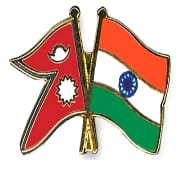9th meeting of EPG on Indo-Nepal relations concludes in Kathmandu
The ninth and final meeting of Eminent Persons Group (EPG) on India-Nepal relations concluded in Kathmandu, capital city of Nepal. During this two day meeting, representatives from India and Nepal deliberated up on various bilateral issues including 1950 Peace and Friendship treaty, trade, transit and border.
Key Facts
During the last meeting, EPG successfully prepared joint report which will be submitted to Prime Ministers of both the countries. It has agreed to update all the bilateral treaties and agreements reached in past between India and Nepal in line with the present reality of the two countries.
EPG members from India included Bhagat Singh Koshyari, Mahendra P Lama, Jayanta Prasad and B C Upreti and from Nepal included Bhekh Bahadur Thapa, Nilambar Acharya, Suryanath Upadhyay and Rajan Bhattarai. Members from India include Bhagat Singh Koshyari, Mahendra P Lama, Jayanta Prasad and B C Upreti
Background
The EPG was formed in January 2016 by Governments of Nepal and India for reviewing the entire gamut of Nepal-India relations and update bilateral agreements and treaties. It is a joint mechanism consisting experts and intellectuals from India and Nepal. There are four members each from Nepalese and Indian sides in the group.
It is mandated to review various aspects of the bilateral relations including Nepal-India Friendship Treaty 1950 and provide suggestion on ways to reshape bilateral between the two countries. During earlier meetings of EPG, Nepali side had presented facts regarding need to review Nepal-India Peace and Friendship Treaty of 1950 so as to update is as required by time and situation.
1950 India-Nepal Treaty of Peace and Friendship
The treaty is a bilateral pact between India and Nepal aimed at establishing close strategic relationship between two South Asian neighbors. It was inked on July 31, 1950 at Kathmandu by then Prime Minister of Nepal Mohan Shamsher Jang Bahadur Rana and then Indian ambassador to Nepal Chadreshwar Narayan Singh.
The treaty has 10 articles. It permits free movement of people and goods between two countries and close relationship and collaboration on matters of defence and foreign affairs. It envisages for eternal peace and friendship between two nations and recognizes and respect complete sovereignty, territorial integrity and independence of each other.
According to Articles 6 and 7 of the treaty, the two countries agree to grant, on reciprocal basis, to citizens of one country in territories of other, same privileges in matter of residence, ownership of property, participation in trade and commerce, movement and other privileges of similar nature.
This enables the Nepali and Indian nationals to move freely across border without passport or visa, live and work in either country and own property or do trade or business in either country. There is a significant number of Nepalis (in millions) living, owning property and working or doing business in India as beneficial aspect of treaty for Nepal. Similarly, many Indians live, own property and do business in Nepal.
Month: Current Affairs - July, 2018



Srinivas c v
July 2, 2018 at 2:06 pmNice information